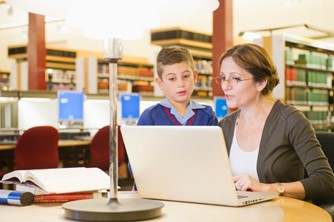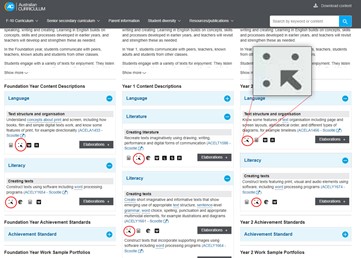If there is one thing all teachers are sure of is that there is not one student or child who has the same learning style as the one next to them in the classroom.
Perhaps it is for this reason that back in 2018 Gonski’s Australian Education report called for personalised learning.
An unlikely believer in this philosophy is Mark Zuckerberg from Facebook, who believed that personalised learning was the answer to many of education’s woes. Thus prompting the pledge of US$45 billion towards it from his initiative fund.
What is Personalised Learning?
Personalised learning is about ensuring that all students are supported in their learning goals and needs. It is commonly to do with disability students, however, the Australian Curriculum Learning Continua also has a core element which focuses on personalised learning in key learning areas.
For that to do with disable and gifted and talented students, it is underpinned by four key elements in activities:
- The assessed individual education needs of the student
- The provision of adjustments or support to meet the students' assessed needs
- Monitoring and review of the impact of the adjustment or support being provided for the student
- Consultation and collaboration – of teachers with parents, support staff, and other professionals where required.
Personalised learning pathways:
- Is based on age-equivalent content that is meaningful and considers a student’s individual needs and communication skills
- Promotes the student’s engagement by considering their strengths and interests
- Provides rigorous teaching and learning experiences that challenge, extend and develop the student.
For the sake of this article, you and I will look at personalised learning in the Learning Continuum.

What is Personalised Learning in Primary Schools?
Personalised learning in primary schools particularly in Australia is concerned with giving students the opportunity to develop their capabilities over time and across all key learning areas.
This is accomplished by using the learning continuum to map out a path for learning progression in 21st century general capabilities particularly in Primary education.
The foundations for a child’s personalised learning plan is set in early childhood education and care and this supports all subsequent learning.
In this article, you and I will examine one as a Case Study – the General Capability – ICT Capability.


The Australian Curriculum Learning Continuum is a personalised learning plan which maps out learning progression pathways for students.
It aligns with the years of schooling in Australia and there are six stages or levels starting with Level 1 in Foundation Year to Year 10 at Level 6.
Personalised learning in primary schools occurs up to Year 6 at Level 4.
This makes it the responsibility of primary teachers to ensure that the majority of personalised learning in the Learning Continua occurs in their classroom learning environment.
ICT capability consists of a number of elements which are diversely spread out in key learning areas. These include:
- Applying social and ethical protocols and practices.
- Investigating with ICT.
- Managing and operating ICT
- Communicating with ICT.
- Creating with ICT.


As literacy in primary school is a key focus one element of the ICT capability Learning Continuum that is applied in its teaching is Creating with ICT.
Literacy and ICT in the primary school work very effectively as the provisionality of ICT enhances the learning of literacy.
However, this is to the extent of your own ICT capability and literacy teaching skills as a teacher.
Personalised learning in primary school begins in this regard with effective planning.
Planning for Personalised Learning and Support in ICT Capability
In order for you to effectively plan for personalised learning in ICT capability, I have outlined the following process in accordance with ICT Capability Learning Continuum.
The Early Years Learning Framework Outcomes 4 and 5 will also be covered in the following.
Get to know the Student
As personalised learning occurs from the Foundation Years up, if you are an early childhood teacher or that of an early years Primary teacher, then it is essential that you ensure that you gather the pertinent information from parents and/carers at the moment their child begins their education and care with you.
To help paint a picture of the ICT experiences children bring, you can:
- Invite families to tell you about their child’s interests.
- Observe children at play using a range of technology.
- Talk to parents on a regular basis, inviting two-way communication on a child’s interests, learning, and development.
- Listen to parents’ stories about their child’s experiences with ICT at home.
This information will help you to begin to plan for learning progression in ICT capability, but this will be based on your understanding of how children learn with ICT in early childhood.
Four areas for you to learn about include:
- Behaviourism.
- Constructivism.
- Social constructivism.
- Situativity.
- Brain-based ideas.
- Metacognitive knowledge.
Personalised Learning in the ICT Capability Learning Continuum
Each learning continua in the Australian Curriculum is there to help you “plan for students’ development of general capabilities” (ACARA, 2020).
The ICT capability learning continuum provides a personalised learning path for teachers in primary school when teaching literacy with ICT.


As you can see in the image above, the attainment levels descriptions increase in various degrees of complexity.
Personalised learning in this element (Creating with ICT) will require you to:
- Apply formative assessment strategies in order to accurately assess a child’s capabilities in ICT.
- Understand what learning progression means for ICT capability.
This information would not only provide you valuable data for your future planning for a student’s personalised learning pathway in ICT capability, but would also inform the teacher of the next year's level of the learning progression in the Learning Continuum.
For example, if the teacher of the next year level was to plan for personalised learning according to the functioning level of the LC than it would be essential to apply these formative assessment strategies to move beyond the ‘best fit’ approach.
This simply would not be okay!
The child might be performing above or below Level 2 for instance. You need to provide more information such as:
- In which media did they have experience in doing this?
- Was it text as in a word processor, with text and graphics as with a desktop package (DTP)?
How will you accurately determine the answers to these questions?
What do you need to know and why?
Join our online professional learning community for teachers in our accredited formative assessment in ICT online workshop for primary teachers. We are committed to helping you personalise learning in primary schools by delivering practical and immediately actionable advice on embedding formative assessment techniques when integrating ICT alongside subject learning.
We will help you tailor a student's ICT learning in meaningful context-driven activities.
Completing this online workshop will contribute to 5 hours of NESA and TQI registered PD addressing 2.6.2 and 5.1.2 of the Australian Professional Standards for Teachers towards maintaining Proficient teacher accreditation in NSW, QLD, Vic and ACT.